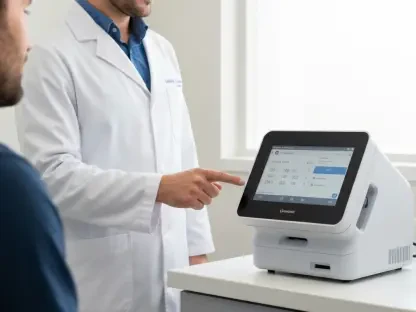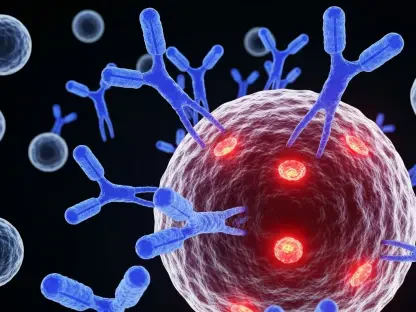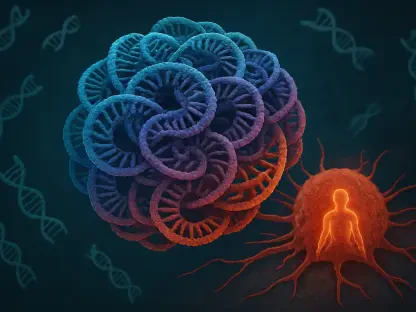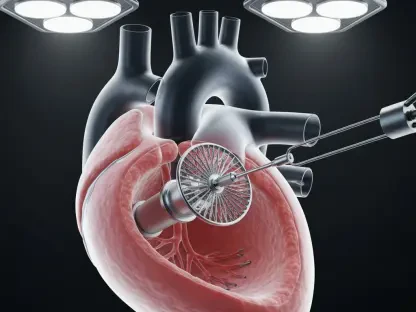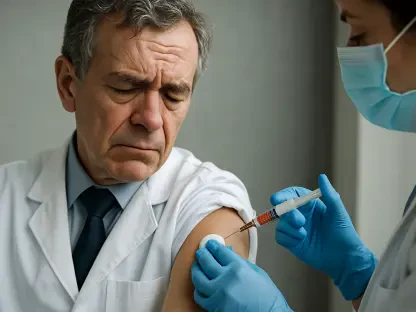In the ever-evolving landscape of medical science, the breast cancer therapeutics market stands out as a beacon of innovation and advancement. Progress in targeted therapies, immunotherapy, and precision medicine has significantly propelled market growth as breast cancer continues affecting millions globally. These developments are particularly vital with the rising incidence of breast cancer and the increasing emphasis on early detection. The global market, valued at USD 27.34 billion just two years ago, is predicted to expand further, expected to reach USD 55.18 billion by 2032. Such growth highlights a Compound Annual Growth Rate (CAGR) of 8.12% from now until the next decade.
Evolution and Categories in Breast Cancer Treatment
Targeted Therapy and Immunotherapy
Advancements in targeted therapy and immunotherapy have been pivotal in reshaping the breast cancer treatment landscape. Traditional chemotherapy, while effective, presents significant side effects, leading to an escalating demand for more sophisticated treatments. Targeted therapies, like trastuzumab (Herceptin) and pertuzumab (Perjeta), have transformed the treatment of HER2-positive breast cancer, offering targeted action with fewer adverse effects. These therapies work by directly targeting cancerous cells, sparing healthy tissue, thus improving patient outcomes.
Immunotherapy, too, has offered a new frontier with immune checkpoint inhibitors such as pembrolizumab (Keytruda), showing promise in combatting triple-negative breast cancer (TNBC). These therapies harness the body’s immune system to identify and attack cancer cells, providing an innovative approach that differs fundamentally from traditional treatment modalities. As research continues, these therapies are expected to expand their reach, offering hope to more patients with various breast cancer subtypes.
Personalized Medicine and Genomic Profiling
Personalized medicine, driven by genomic profiling and biomarker-based strategies, is emerging as a crucial component of breast cancer treatment. This approach allows for therapies to be tailored to the individual needs of patients, based on their genetic makeup and specific cancer characteristics. Tools such as liquid biopsy and next-generation sequencing (NGS) are becoming integral to this process, enabling the detection of genetic mutations that guide the selection of optimal treatment strategies.
Increased understanding of genetic factors and the role they play in cancer progression is paving the way for personalized regimens that can improve efficacy and reduce unnecessary side effects. The emergence of biosimilars, following the expiration of patents for major biologics, is also contributing to this trend by providing more cost-effective treatment options. Pharmaceutical giants like Pfizer, Amgen, and Samsung Bioepis are expanding their portfolios to include these alternatives, ensuring a broader reach for advanced therapies.
Key Trends and Market Dynamics
Integration of Digital Health and AI
The integration of digital health technologies and artificial intelligence (AI) is playing a transformative role in breast cancer therapeutics. AI-driven algorithms have demonstrated impressive accuracy in diagnosing early-stage breast cancer from mammograms, thus enhancing early detection rates. The application of AI extends to treatment monitoring as well, allowing healthcare providers to tailor interventions more precisely and track patient progress in real-time. Digital therapeutics, meanwhile, are aiding patients in managing treatment side effects, improving adherence to therapeutic protocols.
Through initiatives such as remote patient monitoring and telehealth, digital health technologies are dismantling barriers and extending healthcare access. These systems offer the potential for a more streamlined approach to breast cancer care, providing patients with real-time support and interventions that can dramatically affect outcomes. As technology continues to evolve, its role in breast cancer therapeutics is expected to become even more pronounced, contributing to improved survival rates.
Competitive Landscape and Pricing Strategies
The competitive landscape of the breast cancer therapeutics market is characterized by a robust rivalry among leading pharmaceutical and biotech companies vying for market share. Roche leads with its suite of HER2-targeted therapies, including Herceptin and Kadcyla, while AstraZeneca is notable for its PARP inhibitor Lynparza. Pfizer and Novartis contribute significantly with CDK4/6 inhibitors and biosimilars, emphasizing precision medicine. Gilead Sciences and Merck & Co. have also carved out substantial niches with ADCs and immunotherapies like Keytruda, respectively.
Pricing strategies play a pivotal role in shaping market dynamics. Innovative targeted therapies often come with high price tags, though the expanding availability of biosimilars is helping mitigate costs. Government initiatives and insurance coverage are essential in regulating drug accessibility, ensuring that treatments reach a wider patient base. The competition, driven by pricing and innovation, is set to intensify, pushing companies to refine their strategies continuously.
Future Considerations and Innovations
Emerging Technological Innovations
The development of antibody-drug conjugates (ADCs) offers enhanced drug delivery with fewer side effects, highlighting the direction of future therapeutic advancements. These innovative treatments merge the targeting capability of antibodies with the potency of cytotoxic drugs, providing precision targeting of cancer cells. Moreover, ongoing research into mRNA-based treatments could offer new perspectives on cancer therapy, harnessing cutting-edge scientific insight for potential breakthroughs.
AI’s role in accelerating drug discovery is another promising avenue, with powerful algorithms rapidly identifying potential therapeutic compounds. Technologies like CRISPR and gene editing are being explored for their potential to deliver curative treatments, which could alter the trajectory of breast cancer management fundamentally. Sustainability is also becoming a critical consideration, with companies adopting eco-friendly practices in drug manufacturing and packaging, aiming to reduce the environmental impact associated with cancer treatment.
Market Expansion and Global Reach
The breast cancer therapeutics market’s potential for expansion is underscored by its global reach and the diverse range of medical facilities involved, including hospitals, specialty clinics, and research institutes. Segmentation by cancer type—HER2-positive, hormone receptor-positive/HER2-negative, and TNBC—guides customization, enabling precision in addressing varied patient needs. Geographical segmentation into regions such as North America, Europe, Asia-Pacific, Latin America, and the Middle East & Africa underscores the need for region-specific strategies.
Furthermore, the impact of biosimilars in developing regions is proving significant, offering cost-effective alternatives that improve treatment accessibility. Case studies highlighting the effectiveness of therapies like HER2-targeted treatments on survival rates and the financial feasibility of biosimilars emphasize the profound impact on patient outcomes. The emphasis on early detection facilitated by AI serves as a cornerstone in this expansion, promising to redefine breast cancer treatment paradigms.
Perspective on Breast Cancer Therapeutics
Within the ever-changing realm of medical science, the breast cancer therapeutics market emerges as a key area of innovation and progress. Advances in targeted therapies, immunotherapy, and precision medicine have notably fueled market growth as breast cancer continues to impact millions worldwide. These developments are crucial in response to the rising number of breast cancer cases and the growing importance placed on early detection strategies. The global market’s valuation, which was USD 27.34 billion merely two years ago, is anticipated to escalate dramatically, potentially reaching USD 55.18 billion by the year 2032. This projected increase underscores a Compound Annual Growth Rate (CAGR) of 8.12% over the next decade, reflecting ongoing dedication to improving patient outcomes and highlighting the increasing demand for effective cancer treatments. As research breakthroughs continue to shape therapeutic options, the importance of innovation in the fight against breast cancer cannot be overstated.



